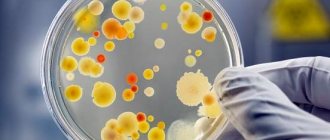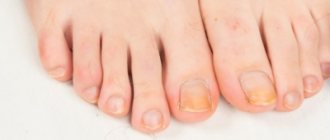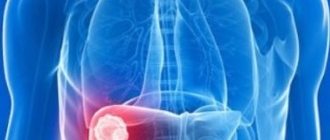Stage 2 hypertension develops not only in older people, but also in young patients, as a consequence of untimely treatment of stage 1 hypertension. If appropriate therapeutic actions are not taken, there is a high risk of the disease developing into the third and fourth stages, which significantly increases the risk of not only frequent hypertensive crises, heart attack, stroke and acute renal failure, but also sudden death.
Let's analyze the key features of second-degree hypertension, the nature of the symptoms, possible complications and risks, how the diagnosis is performed, and what medications are prescribed to eliminate the disease.
What does the second stage of hypertension mean?
What does this mean - “diagnosis of stage 2 hypertension”?
According to the classification of diseases, this is the subsequent (moderate) phase of progression of stage 1 hypertension (ICD-10 code - l10). The second stage of the disease is characterized by a moderate chronic course, with elevated blood pressure persisting longer than with stage 1 hypertension, and its decrease to normal levels occurs in rare cases.
The presence of stage 2 hypertension is indicated by the following blood pressure indicators:
- The upper level is 160-180 units.
- The lower level is 100-110 units.
Forms of development
Depending on the speed of transition of hypertension from one to another stage, it can be:
- Benign.
- Malignant.
The malignant form is especially dangerous, which is characterized by rapid development, which can lead to sudden death.
The second stage of arterial hypertension, even of a benign nature, cannot be completely cured, but timely therapy can reduce the activity of pathological processes and stabilize blood pressure levels.
Symptoms of hypertension
The main symptom of hypertension is elevated blood pressure. At this stage of the disease, abnormalities in other organs are always observed, so it is not characterized by an asymptomatic course, which is typical for the initial stage of hypertension.
| Damaged organs | Characteristic symptoms |
| The cardiovascular system | Fast fatiguability. Shortness of breath on exertion. Blood pressure is constantly above normal. Uneven heartbeat. Chest discomfort or pain. Hypertensive crisis. Rapid heartbeat. |
| Eyes | Darkening in the eyes. The appearance of a veil. Dilation of the ophthalmic arteries. Progressive loss of vision. |
| Brain | Increased sleepiness. Ringing in the ears. Dizziness. Vomit. Memory impairment. Unstable sleep. Nausea. Decreased performance. Violation of the psycho-emotional background. Headache of varying strength and location. |
| Blood vessels | Increased fragility and dryness of the skin. Reduced sensitivity of the hands and feet. Constant feeling of coldness in the extremities. |
| Kidneys | Frequent night urination. Decreased renal functionality. Swelling of the feet after a night's rest. Cloudiness of urinary fluid. Slightly pink color of urine. |
Symptoms of pathology
At the second stage of the pathology, symptoms are expressed differently: some do not feel an increase in pressure, but most people suffering from hypertension experience extremely unpleasant symptoms. It is worth saying that the manifestations of pathology in different people can be exactly the opposite.
Most often, in the second stage of the disease, the following manifestations occur:
- Headache throbbing in temples.
Dizziness.
- Nausea.
- Chills, cold extremities.
- Heat.
- Weakness.
- Sweat.
- A persistent feeling of anxiety.
- Anxiety.
- Bad dream.
Any symptoms from the list are a reason to check your blood pressure. If any violations are detected, you should visit a specialist as soon as possible and begin treatment.
Reasons for the development of the disease
The main reason for the development of stage 2 hypertension is the lack of timely treatment for stage 1 hypertension or the active progression of concomitant pathologies that could not be stopped at the initial stage of the disease.
Risk factors in medicine are divided into 2 groups:
- Changeable (managed).
- Immutable (unmanageable).
| Group of reasons | Factors provocateurs |
| Changeable | Smoking. Poor nutrition. Excessive salt intake. Difficult pregnancy. Increased cholesterol levels. High presence of triglycerides. Intoxication of the body due to long-term drug therapy. Systematic alcohol consumption. Disruption of all metabolic processes, which leads to a sharp increase in body weight due to poor absorption of sugar. Hormonal disorders. Stressful situations. Emotional stress. Lack of physical activity. Insufficient rest. Obesity, especially of the abdominal cavity. |
| Immutable | The age of men is over 55 years. Women's age is over 65 years. Genetic predisposition. |
It is worth emphasizing that the development of hypertension requires the simultaneous manifestation of several provoking factors, but to aggravate its course, 1-2 reasons are quite enough.
What complications are dangerous in stage 2 hypertension?
With grade 2 hypertension, significant deviations are observed in the system responsible for the narrowing and expansion of blood vessels. As a result, the mechanism of compression of the vascular walls begins to predominate, which leads to a persistent jump in arterial parameters.
Chronic vasospasm in stage 2 hypertension provokes pathological changes in organs and structures that are significant for the body, which constantly require the correct supply of nutrients and oxygen.
The dangers of second-degree hypertension are listed below:
| Organs and systems of the body | Results of negative influence |
| Heart muscle | Heart attack. Left ventricular hypertrophy (5 times increased risk of death). |
| Hematopoiesis | An increase in blood glucose levels leads to damage to the central nervous system. |
| Brain | Stroke. Transient circulatory disorders in the brain. |
| Kidneys | Kidney failure. Proteinuria (the presence of this disease indicates the activity of the kidney damage process). |
| Eyes | Irreversible retinal detachment. Hemorrhage in the fundus of the eye. The onset of incurable blindness. |
Risk levels
Stage 2 hypertension is characterized by systematic attacks, often blood pressure rises by 59 units at once, which is dangerous due to a heart attack, cerebral or pulmonary edema.
| Risk factor criteria | Risk | SSO value as a percentage |
| Presence of 1-2 provoking complications | 2 | 20% |
| Presence of more than three aggravating causes | 3 | Up to 35% |
| Multiple anomalies | 4 | More than 35% |
- Stage 2 hypertension, risk 2, is characterized by the presence of two pathological factors causing an increase in blood pressure and additional symptoms, while there are often no deviations in the endocrine system.
- Hypertension grade 2, risk 3 - diabetes mellitus, kidney failure, atherosclerosis and ischemia develop, damage to small vessels is observed.
- Risk 4 for stage 2 hypertension means that the patient has already had 1-2 heart attacks, and his health is rapidly deteriorating due to constantly elevated blood pressure and the presence of several severe chronic diseases.
Diet for stage 2 hypertension
It's no secret that the development of hypertension in overweight people is observed much more often. Medical studies show that every extra kilogram increases blood pressure by 1 mmHg. Therefore, an important factor influencing blood pressure indicators is not just constant monitoring of these numbers, but also normalization of the patient’s weight. The basic rules for changing your diet are:
- Reducing the amount of salt in food. Everyone knows that salt retains water in the body, and this effect directly affects the volume of circulating fluid in the bloodstream and increases blood pressure;
- You need to avoid drinks containing caffeine (strong tea, coffee) and alcohol. They contribute to the formation of spasm in the blood vessels and, as a result, increase the load on the heart muscle;
- Exclusion from the diet of foods rich in animal fats. To do this, it is necessary to reduce or completely remove sausages, melted fat, and butter from the diet. It is necessary to reduce the consumption of animal lipids by at least a third;
- Reduce the amount of sugars you consume. It is easily digestible carbohydrates that are the main factor for creating extra pounds. All pastries, cookies, cakes, candies and chocolates must be vetoed;
- It is necessary to lean on foods that contain large amounts of fiber. It is fruits and vegetables that will help normalize intestinal function and lose a few extra pounds;
- Eating foods high in magnesium and potassium will strengthen your heart muscle. The main sources of these elements are beets, dried apricots, cabbage, carrots and a variety of cereals.
You need to understand that a balanced diet with the consumption of sufficient amounts of proteins, fats and carbohydrates can help normalize the patient’s well-being, blood pressure, and at the same time the weight of the patient.
Diagnosis of the pathological process
Regardless of the degree of hypertension, for any of its manifestations, differential diagnosis is performed to exclude a secondary type of hypertension. If the second stage of hypertension is suspected, the main task of the examination is to accurately determine the stage of the disease. To do this, the doctor needs to get an answer to the following questions:
- Set the elevated pressure level.
- How stable is the increase in blood pressure?
- Rule out the presence of other pathologies.
- Determine the root causes of hypertension.
- Diagnose the condition of target organs.
- Determine the severity of pathological processes in these organs.
- Assess the present risk of complications of hypertension.
When making a preliminary diagnosis of the disease, the procedure for measuring arterial values has some important nuances:
- It is better to measure blood pressure at home to avoid the “white coat” syndrome, which will help to obtain the most accurate blood pressure readings.
- Pressure should be measured on both arms, and in some situations on the lower extremities.
- Be sure to record the results in a notepad.
- The frequency of monitoring is two or more times a day for a week.
- It is possible to carry out daily blood pressure monitoring, which allows you to more accurately determine the stage and type of hypertension.
An additional examination by an ophthalmologist can establish the following abnormalities in the visual system:
- Compression of the fundus vessels.
- Thickening of vascular walls.
- Tortuosity of arterioles and arteries.
- Do arteries compress the walls of veins?
- Degree of vein expansion.
- Are there any hemorrhages on the retina?
Lab tests
Laboratory tests are prescribed:
- Blood test to determine levels of low-density lipids, cholesterol and triglycerides.
- Sampling of blood fluid to determine the indicator of high-density lipid substances.
- Blood test for the amount of sugar on an empty stomach or after a glucose load.
- Analysis of the presence of deviations in potassium to a lesser or greater extent.
- Testing urine for high acidity and creatinine levels.
- Testing urine to measure the rate of filtration capacity of the kidneys.
- Carrying out a biochemical analysis of urine for the presence of protein.
Hardware examination
Diagnosis using hardware examination helps to confirm or exclude the presence of secondary type hypertension caused by diseases of certain organs, as well as to establish pathological processes in target organs:
| Hardware examination | What pathological processes does it reveal? |
| Ultrasound of the heart | How stretched the left ventricle is (if it increases, the degree of decompensation of cardiac tissue is assessed). How incorrectly do the mitral valve leaflets close? Primary expansion of left atrium tissue. Hypertrophy of the aorta and cardiac vessels. |
| ECG of the heart | Presence of cardiac arrhythmia of any kind. The presence of thickening of the tissues of the left ventricle. |
| Kidney ultrasound | Establishing the size of disturbances in the renal structure. |
| Ultrasonography (ultrasound) of the arteries of the head and neck | Spasm of arterial vessels in the cervical region and head. The degree of loss of elasticity of the arteries at the time of heart contraction. How much atherosclerosis affected their functionality. |
| MRI of arterial vessels of the brain, neck, chest and abdominal cavity | This hardware test is prescribed if the development of secondary hypertension is suspected. In addition, it is necessary to exclude the possibility of aggravation due to such clinical conditions as incorrect blood flow to the brain, heart, etc. |
What should hypertensive people eat?
Greens are healing for vessels, and not some special, exotic one, but the well-known parsley. Therefore, feel free to add it to salads, soups, and hot vegetable dishes. But only slightly heat the parsley.
Be sure to include dried fruits and nuts in your daily diet. These are valuable products, rich in essential vitamins and microelements, and contain a lot of potassium, which is important for blood vessels and the heart. There is also magnesium, which is involved in vasodilation.
Garlic is considered a good stimulator of healthy heart function. Soups can still be eaten frequently, even daily, but preference should be given to vegetable broths. Cook soups with meat or bones no more than once a week.
Don't get carried away with exotic cuisine. Firstly, the risk that an allergy will occur to a particular product is very high, and secondly, the benefits from them are also quite doubtful. Doctors often advise basing your diet on foods that grow specifically in the region where you live.
Try to eat understandable food, rather than complex dishes whose recipes are not entirely clear. Do not fry, but steam, stew, boil, bake.
Eat small meals: three main meals plus several light snacks. Try not to eat before bed. An hour before going to bed, drink a glass of kefir or eat an apple.
Features of the disease treatment regimen
Arterial hypertension of the 2nd degree is a chronic pathological process, so it is impossible to get rid of it or reduce its active manifestation without eliminating the provoking factors.
Treatment tactics for this stage of headache depend on:
- Depending on the number of provoking factors present.
- How seriously the pathological process affected the target organs.
- How radically the patient changed his lifestyle.
Drug therapy and other accompanying treatment methods are selected in such a way as to achieve a stable reduction in blood pressure to 130/80 units.
Drug therapy
Since the use of several antihypertensive drugs is indicated for stage 2 hypertension, the best option is to use combination drugs that have a long-term therapeutic effect. The doctor determines which medications will be prescribed based on the general condition of the hypertensive patient and the characteristics of the disease itself.
It is usually practiced to use five main drug groups and their combinations, while a sixth group is also used, but it contains only one drug.
So, the table below shows the names of drugs from each drug group.
| Group of drugs | Name of medicines | Combination drug options |
| ACE inhibitors | Prestarium Hartil Lisinopril | Bi-Prestarium Prestarium arginine combi Triplexam Amlipin Lisinopril NL Hartin-N Hartil-AM |
| Beta blockers | Atenolol Bisoprolol | Tenochek Tonorma Tenorik Alotendin Bisporolsandoz |
| Angiotensin 2 antagonists | Vazar Mikardis Lorista | Exofrj N Vazar-N Micardis-plus Lorista-N |
| Calcium blockers | Nifedipine Amlodipine Lercanidipine | Diltiazem Azomex Verapamil |
| Diuretics | Hypothiazide Indapamide Xipamide Eplerenone Veroshpiron | Diuretidin Triampur |
| Renin antagonists | Rasilez | — |
In addition to these groups, the doctor may also recommend concomitant medications, depending on the nature of the abnormalities in the body and the results of the examination.
All these drugs are indicated for the treatment of stage 2 hypertension exclusively in adult patients. Regarding the drug treatment of children, a different therapeutic regimen is used in pediatrics, taking into account the age category of the child.
Concomitant therapy
To increase drug effectiveness, along with medications, cardiologists recommend taking herbal remedies based on folk recipes, as well as a radical revision of lifestyle, which implies:
- Diet (refusal of coffee, strong tea, canned food, sausages, smoked meats, fatty and fried foods, limitation of salt and sugar) and adherence to a fractional balanced diet with a predominance of cereals, low-fat foods and fresh vegetables and fruits. Meals should not contribute to fluid retention in the body.
- Increase physical activity. Hypertensive patients are recommended to exercise at least once a week with moderate exercise, monitoring blood pressure and heart rate.
- Refusal of harmful addictions (smoking, alcohol, drugs, etc.).
- Avoiding stress and unnecessary psycho-emotional unrest.
- A full night's sleep of at least 8 hours (it is better to go to bed before 22:00).
- A scheduled visit to the doctor, taking prescribed medications in compliance with their dosage.
Among the folk remedies that can be recommended:
| Means | Recipe |
| Sedative herbs | Among them: mint, lemon balm, motherwort, valerian rhizome. Any product in a volume of 1 tsp. pour 300 ml of boiling water, heat in a water bath for 15 minutes and cool. The mixture is drunk 3 times a day, 100 ml. at regular intervals. |
| Collection | 3 tbsp. chokeberry fruits, 2 tbsp. rose hips and hawthorn berries, 2 tbsp. Dill seeds are combined and thoroughly crushed until smooth. For brewing use 3 tbsp. mixtures per 1 liter. hot water. It is advisable to infuse the composition for at least 2 hours in a tightly closed container, and drink 150-200 ml. up to three times a day. |
| Berry juice with propolis | Juice is squeezed out of lingonberries or cranberries in a volume of 50 ml. and mixed with 15 drops of pharmaceutical propolis tincture. The prepared mixture should be taken 2-3 times a day before meals. |
| Golden milk | In 150 ml. hot milk diluted with 1 tsp. turmeric powder and drink the mixture throughout the day in 2-3 approaches. |
How to treat
The treatment regimen is prescribed exclusively by the attending physician. Traditional methods of therapy are as follows:
- Diuretics are used, which have a diuretic effect and allow the removal of salts and fluid. For treatment, you can use Thiazide, Furosemide.
- Antihypertensive drugs are prescribed to lower blood pressure. Among the effective ones are Physiotens and Lisinopril.
- It is possible to use medications that reduce bad cholesterol: Zovastikor, Atorvastatin.
- Blood thinning drugs: Aspicard, Cardiomagnyl.
The effectiveness and quality of therapy depends on the dosage and compliance with the rules. Treating hypertension yourself is life-threatening. The doctor prescribes treatment based on the patient’s data, his weight, age, and additional diseases.
Only comprehensive treatment will reduce blood pressure, relieve symptoms, and also make it possible to use medications in small doses. The basic rule of treatment using an integrated method is strict, constant use of medications, in a clearly indicated dose.
Prognosis and life expectancy
A positive prognosis largely depends on the pathological factors present and their combination, as well as on the general well-being of the hypertensive patient himself.
Stage two hypertension is a pathological condition that cannot be completely cured, but is well controlled, provided that the patient regularly takes the prescribed pills and adheres to other medical prescriptions, including recommendations for the prevention of repeated surges in blood pressure.
Careful adherence to all components of complex therapy and other medical recommendations can prolong a person’s life and increase the chances of a favorable outcome.
With further progression of the disease and the simultaneous formation of cardiovascular pathologies, hypertension risks ending in death.
Is disability given?
For stage 2 hypertension, disability groups 1-3 are assigned, based on the severity of the disease:
- If the work of a hypertensive patient is associated with constant physical or psycho-emotional stress, he is transferred to another place with milder working conditions, but with the same salary.
- In case of severe illness with regular crises, the labor commission makes a decision on limiting the ability to work.
- With a slowly progressing illness, the patient receives the right to the third disability group.
- In case of stage 2 hypertension with multiple complications, disability group 2 is assigned.
- In the case of a malignant form, when a person is unable to move independently, the first group is assigned.
Deferment from the army
Regarding whether a person with the second stage of hypertension can be taken into the army, the answer is clear - they won’t. With this degree of illness, the patient needs regular drug therapy due to the danger of frequent crises, heart rhythm disturbances, atherosclerosis and other complications.
When the diagnosis is confirmed, a mark is placed on the military ID - limited fit.









